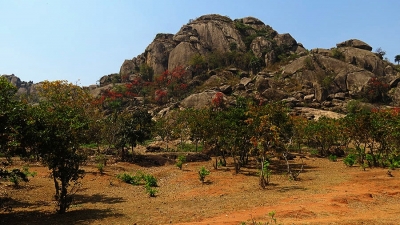
A new study by researchers from India, Australia and the U.S. suggests that the first stable continents (cratons) rose from the oceans 700 million years earlier than previously thought, and that the earliest continental landmass to emerge may have been Jharkhand’s Singhbhum region.
Researchers studied sedimentary rocks called sandstones in Singhbhum and analyzed the uranium and lead content of the zircon mineral preserved within them. The rocks were estimated to be 3.2 billion years old. They observed signs of river channels, tidal zones and beaches in the sandstones – all of which occur on crust exposed to air, and not crust underwater.
The consensus until now has been that the continents emerged around 2.5 billion years ago through plate tectonics- the horizontal movement, collisions and upward movement of continental plates. A study of the granites that form the continental crust of Singhbhum suggests that heated magma beneath the crust caused areas to thicken and become enriched with lightweight elements like silica and quartz, leaving it “physically thick and chemically light” and buoying the landmass up to float. This suggests that Singhbhum’s elevation increased from 3.6 kms below sea level 3.5 billion years ago to over 1.8 kms above sea level 3.2 billion years ago, making the region one of the oldest beaches on the planet.
The study probed two aspects of the emergence of continents. “The sandstones tell us when and the granite tells us how,” says Priyadarshi Chowdhury, geologist at Australia’s Monash University. “The Singhbhum region is possibly Earth’s earliest continental land exposed to the air. Before that, Earth was a water world, the whole planet covered by water.”
Picture Credit : Google
Leave a Reply